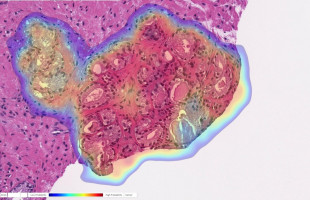
West African genetic ancestry was associated with increased prostate cancer among men living in disadvantaged neighbourhoods but not among men living in more affluent neighbourhoods, according to a new study led by researchers at the National Institutes of Health (NIH).
The findings suggest that neighbourhood environment may play a role in determining how genetic ancestry influences prostate cancer risk.
The study was published Sept 16th, 2024, in JAMA Network Open. In the United States, most Black Americans have West African genetic ancestry, the researchers noted.
Previous studies have shown that West African genetic ancestry is linked to increased prostate cancer risk among Black men, whose risk is higher than that of any other U.S. population group.
However, it is unclear whether additional factors play a role in determining this ancestry-related risk.
To explore how the neighbourhood environment and West African genetic ancestry may act together in influencing prostate cancer risk, researchers at NIH’s Centre for Cancer Research at the National Cancer Institute (NCI) conducted a study with long-term follow-up that included 1,469 self-identified Black and White men from the greater Baltimore area.
The researchers determined the men’s West African ancestry through genetic markers and neighbourhood socioeconomic status through factors such as unemployment rate, income level, and percentage of households in poverty.
The researchers then examined the combined association of this ancestry and the neighbourhood environment with prostate cancer risk and found that West African genetic ancestry was associated with prostate cancer risk among men living in disadvantaged neighbourhoods but not among those living in more affluent areas.
The researchers posited that the increased ancestry-related risk in disadvantaged neighbourhoods may be due to chronic stress—such as from racial profiling, housing discrimination, and exposure to violence—which can affect the immune system and cause high levels of inflammation, in turn promoting tumour growth.
Source: NIH/National Cancer Institute
We are an independent charity and are not backed by a large company or society. We raise every penny ourselves to improve the standards of cancer care through education. You can help us continue our work to address inequalities in cancer care by making a donation.
Any donation, however small, contributes directly towards the costs of creating and sharing free oncology education.
Together we can get better outcomes for patients by tackling global inequalities in access to the results of cancer research.
Thank you for your support.